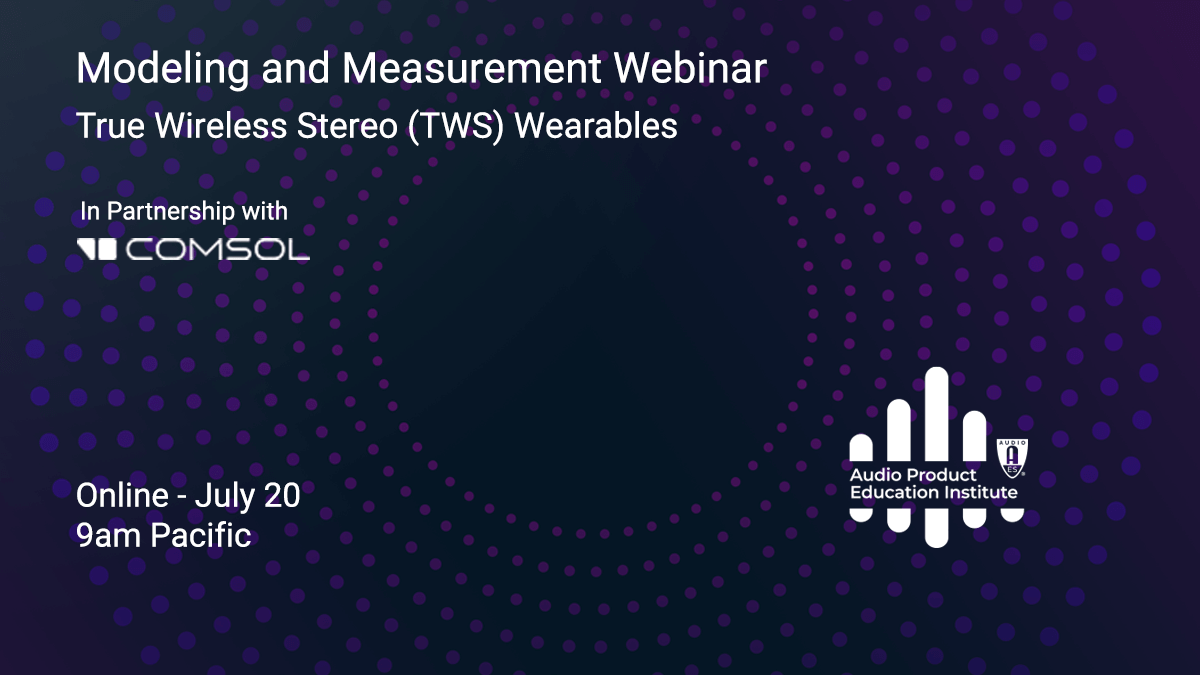

Location
Organizer

APEI
Website
https://audioproducteducationinstitute.org/The Audio Product Education Institute (APEI) is an initiative of the Audio Engineering Society (AES) that is committed to furthering the knowledge and skills of professionals involved in the development of audio products. APEI will focus on promoting methodologies, practices and technologies involved in developing and bringing audio products to market.
Speakers
-
 Jinlan HuangLead Applications Engineer, COMSOL Massachusetts, USA
Jinlan HuangLead Applications Engineer, COMSOL Massachusetts, USAJinlan Huang is a lead applications engineer for vibrations and acoustics at COMSOL and instructs acoustics training courses. She received her PhD from Boston University, Department of Aerospace and Mechanical Engineering, investigating acoustic wave propagation in complex-tissue environments and ultrasound-induced tissue heating and bleeding control. She joined COMSOL in 2011.
-
 Roger ShivelyJJR Acoustics, LLC - Seattle, WA USA
Roger ShivelyJJR Acoustics, LLC - Seattle, WA USARoger is a Co-founder and Principal of JJR Acoustics. He has over 34 years of experience in engineering research and development, with significant experience in product realization and in launching new products at OEM manufacturers around the world. Before co-founding JJR Acoustics in 2011, Roger worked as Chief Engineer of Acoustic Systems as well as functional manager for North American and Asian engineering product development teams in the Automotive Division of Harman International Industries Inc; a journey that began in 1986.
Roger received his degree in Acoustical Engineering from Purdue University in 1983, and finished post-graduate work in the field of finite element analysis. He is a member of the Audio Engineering Society, Acoustical Society of America, and Society of Automotive Engineering. He has published numerous research papers and articles in the areas of transducers, automotive audio, psychoacoustics, and computer modeling. Roger also holds US and International Patents related to the design of advanced acoustic systems and applications particularly in the field of automotive audio. Roger is Co-Chair of the AES Automotive Audio Technical Committee. -
Steve F. Temme
Location
There are many events that are held online throughout the year.

Organizer
APEI
Website
LinkThe Audio Product Education Institute (APEI) is an initiative of the Audio Engineering Society (AES) that is committed to furthering the knowledge and skills of professionals involved in the development of audio products. APEI will focus on promoting methodologies, practices and technologies involved in developing and bringing audio products to market.
Date
- Jul 20 2021
- Expired!
Time
Pacific- 9:00 am - 10:00 am
